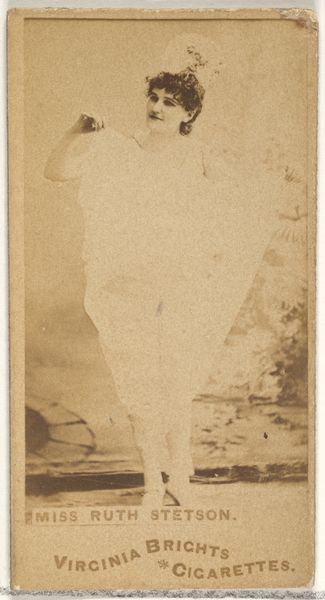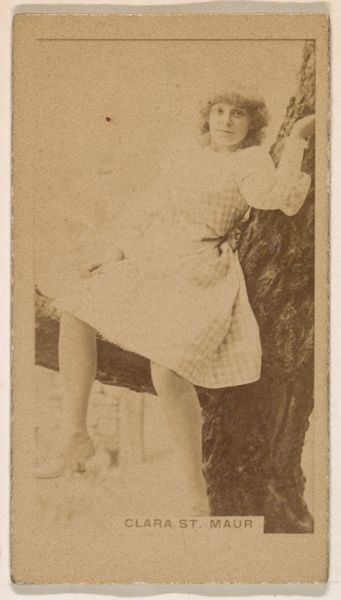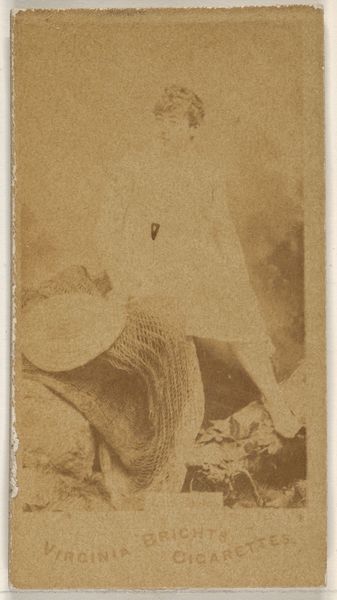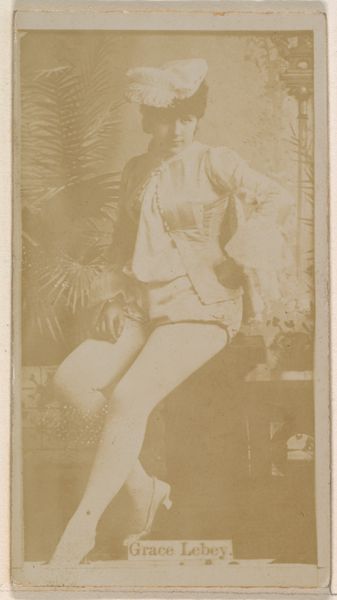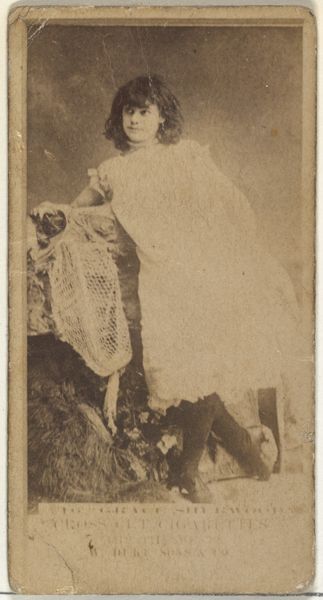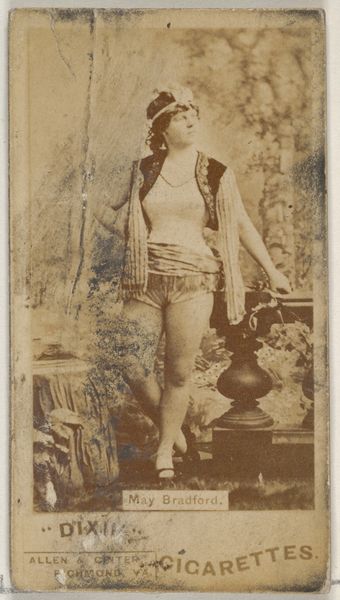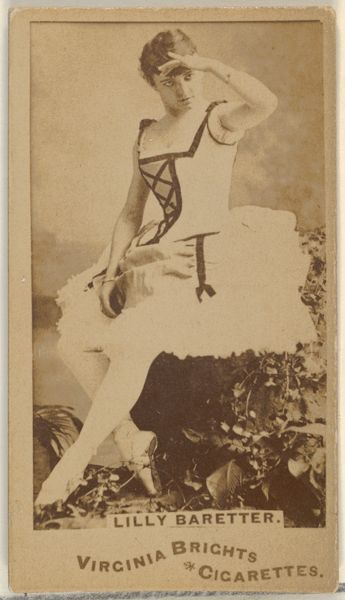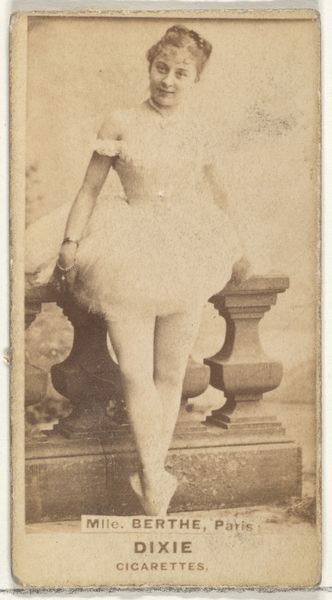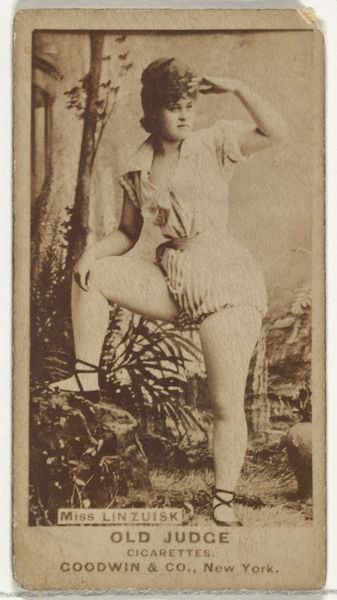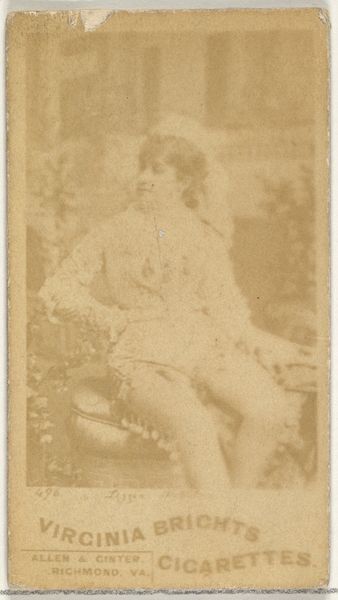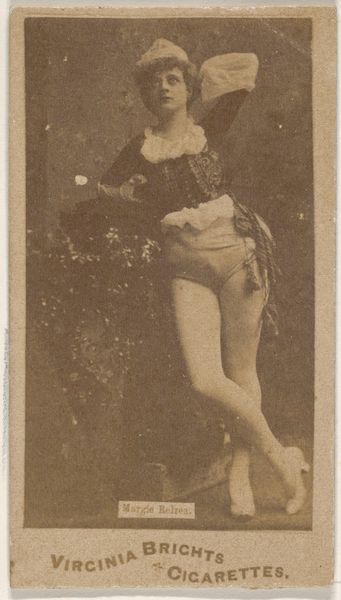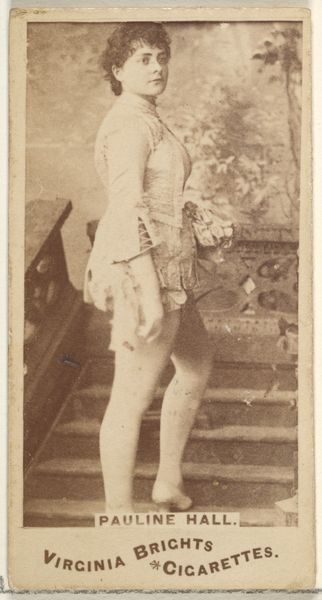
Card 757, from the Actors and Actresses series (N45, Type 2) for Virginia Brights Cigarettes 1885 - 1891
0:00
0:00
drawing, print
#
portrait
#
pencil drawn
#
photo of handprinted image
#
drawing
#
toned paper
#
light pencil work
#
ink paper printed
# print
#
pencil sketch
#
pencil drawing
#
coloured pencil
#
men
#
watercolour illustration
#
watercolor
Dimensions: Sheet: 2 3/4 x 1 3/8 in. (7 x 3.5 cm)
Copyright: Public Domain
Editor: We are looking at "Card 757" from the "Actors and Actresses series" created by Allen & Ginter between 1885 and 1891, currently housed at the Metropolitan Museum of Art. It seems to be a lithograph or a print on a card, showcasing a portrait of a dancer. It’s interesting to see the composition within this small format. What are your thoughts? Curator: From a formal perspective, observe how the artist has arranged the figure within the rectangular plane. The dancer’s pose, with her arms raised, creates a dynamic, almost curvilinear form that is juxtaposed against the more static backdrop. Consider the tonal range, too—the limited palette emphasizes shape and form rather than detail, drawing attention to the structure of the image itself. What do you make of the symmetry, or perhaps the asymmetry, within this construction? Editor: I see what you mean. The dress, in particular, acts as a strong central shape, a bright cloud almost, balancing with the darker, heavier base elements around it. How would you say that influences our viewing of the dancer? Curator: Precisely. It’s through this contrast of light and dark, of form and implied movement, that the viewer’s eye is directed and held. The surface quality, though seemingly simple, is actually quite complex. Notice how the printing process itself—the texture of the ink on paper—adds another layer to the visual experience. Each mark contributes to the overall aesthetic effect. Editor: So it’s not just the image but also how it was created and composed that informs its impact? Curator: Indeed. It is the orchestration of these formal elements—line, shape, tone, texture, and composition—that generates meaning, or perhaps, more accurately, multiple layers of meaning, within the artwork. It is a fine piece for observing the artistic structure, rather than the actress shown. Editor: This way of thinking has helped me better see how artistic elements and methods influence our engagement with it, completely changing the way I look at art in general. Thank you!
Comments
No comments
Be the first to comment and join the conversation on the ultimate creative platform.
